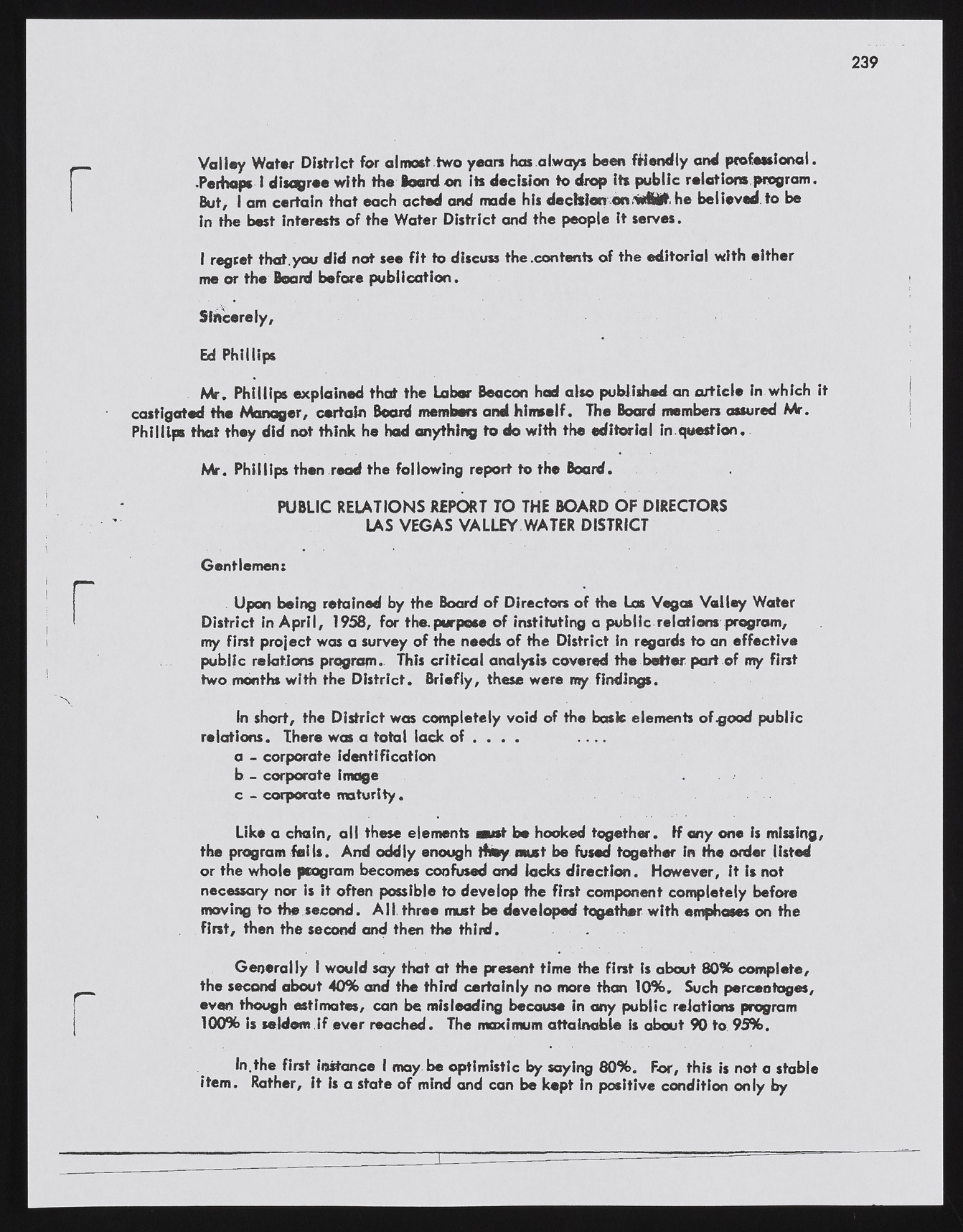Copyright & Fair-use Agreement
UNLV Special Collections provides copies of materials to facilitate private study, scholarship, or research. Material not in the public domain may be used according to fair use of copyrighted materials as defined by copyright law. Please cite us.
Please note that UNLV may not own the copyright to these materials and cannot provide permission to publish or distribute materials when UNLV is not the copyright holder. The user is solely responsible for determining the copyright status of materials and obtaining permission to use material from the copyright holder and for determining whether any permissions relating to any other rights are necessary for the intended use, and for obtaining all required permissions beyond that allowed by fair use.
Read more about our reproduction and use policy.
I agree.Information
Digital ID
Permalink
Details
More Info
Rights
Digital Provenance
Publisher
Transcription
2 3 9 Valley Water District for olmast two years has always been friendly and professional. -Perhaps I disagree with the Board on Its decision to drop its public relations program. But/ I am certain that each acted and made his decfsion on.'wtWPr he believed, to be in the best interests of the Water District and the people it serves. I regret that.you did not see fit to discuss the .contents of the editorial with either me or the Board before publication. Sincerely, Ed Phillips M r. Phillips explained that the Labor Beacon had also published an article in which it castigated the Manager, certain Board members and himself. The Board members assured M r. Phillips that they did not think he had anything to do with the editorial in.question. M r. Phillips then read the following report to the Board. PUBLIC R ELA TIO N S REPORT T O THE BOARD O F DIRECTORS LAS V E G A S V A LLEY WATER DISTRICT Gentlemen: Upon being retained by the Board of Directors of the Las Vegas Valley Water District in A p ril, 1958, for the. purpose of instituting a public relations program, my first project was a survey of the needs of the District in regards to an effective public relations program. This critical analysis covered the better part of my first two months with the District. Briefly, these were my findings. In short, the District was completely void of the basic elements of .good public relations. There was a total lack of . . . . . . . . a - corporate identification b - corporate image c - corporate maturity. Like a chain, all these elements must be hooked together. If any one is missing, the program fails. And oddly enough jftey must be fused together in the order listed or the whole program becomes confused and lacks direction. However, it is not necessary nor is it often possible to develop the first component completely before moving to the second. A ll three must be developed together with emphases on the first, then the second and then the third. Generally I would say that at the present time the first is about 80 % complete, the second about 40% and the third certainly no more than 1 0 % . Such percentages, even though estimates, can be misleading because in any public relations program 100% is seldom.if ever reached. The maximum attainable is about 90 to 9 5 % . In.the first instance I may be optimistic by saying 8 0 % . For, this is not a stable item. Rather, it is a state of mind and can be kept in positive condition only by

